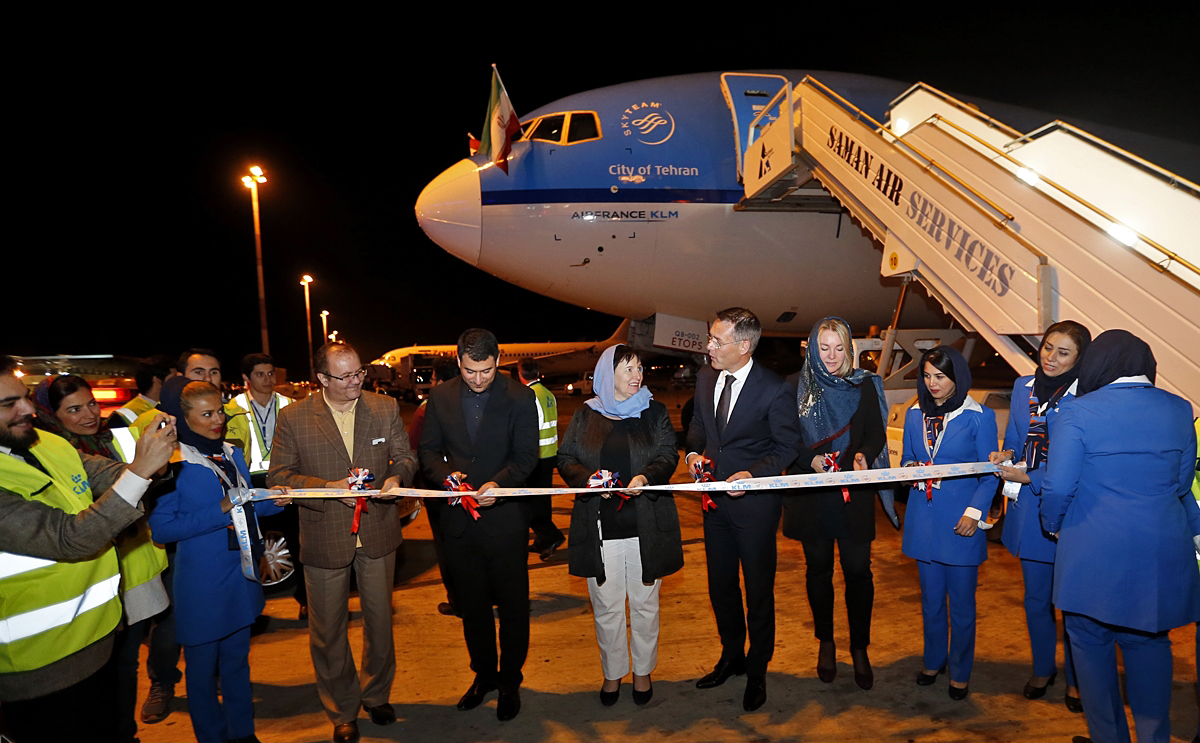The number of flights handled by international airlines to and from Iran in the last fiscal year (March 2016-17) shows a whopping 84% rise compared to four years ago, when Hassan Rouhani became president for the first time, data published on Civil Aviation Organization’s website show.
In fact, the number has marked a steady uptrend since the beginning of the period under review, as 21,114, 28,047, 32,436 and 38,814 flights were registered in the fiscal 2013-16, growing by 32.83%, 15.64% and 19.66% year-on-year.
International flights began to resume their services in Iran after the removal of sanctions against the country over its nuclear program.
In July 2015, Iran signed a landmark deal with world powers to limit the scope of its nuclear program in exchange for the removal of sanctions, which went into effect in January 2016.
Air France, KLM, British Airways and Lufthansa are among the major international airlines that came back to Iran after the lifting of sanctions. Many other airlines have established new routes to and from Iran ever since, including Thailand’s Thai Airways, Kazakhstan’s Air Astana and Malaysia’s AirAsia.
> Domestic Airlines Broaden Reach
Overall, a total of 273,327 flights were registered last year, indicating a 27% rise compared to 2013-14. About 86% of these flights were operated by domestic airlines.
Iranian flag carrier Iran Air was allowed to resume flights to the European Union after it was removed from the EU safety blacklist post sanctions.
Previously, the European Union had sharply curtailed access to its airspace for Iran Air fleet as a safety measure against the country's aging aircraft battered by international trade restrictions that prohibited the sale of spare parts to maintain the planes.
"I am happy to announce that we are now able to allow most aircraft from Iran Air back into European skies," EU Transport Commissioner Violeta Bulc was quoted by Reuters as saying in June 2016, adding that Iran Air will now be allowed to fly all its planes in the EU, except the Boeing 747-200, Boeing 747SP and Fokker 100 models.
> Fleet Expansion
After the removal of sanctions, Iranian airlines were able to order both new and used planes to rejuvenate their fleet. The total number of jets in Iranian airlines' fleet grew from 244 to 248, 268 and 278 over the successive years under review.
Iran Air has secured firm contracts with US jetmaker Boeing, its European rival Airbus, as well as with French-Italian manufacturer of turboprop aircraft ATR to buy a total of 200 planes worth tens of billions of dollars since then.
The state-run airline has received seven of its ordered planes so far, including three Airbus and four ATR. The delivery of the rest hinges on provision of financing for the purchases.
Another Iranian airline, Aseman, signed a contract with Boeing on June 10 to purchase 30 B737-Max passenger jets worth $3 billion based on catalog prices with the option of adding 30 more in the future. The deliveries are scheduled to begin as of 2022.
Aseman says Boeing will support the financing of 95% of the value of the deal. Aseman is also in talks with Airbus to add two A340s and seven A321s to its fleet, which is the third largest in Iran, after Iran Air and Mahan.
And most recently, Qeshm Air announced a preliminary deal with Boeing to buy 10 B737Max passenger jets on June 23. The order is expected to be finalized by early August, according to the chief executive of the Iranian airline. Mahmoud Shekarabi added that Qeshm Air is also planning to buy five secondhand Boeing 737-800 aircraft.
Qeshm Air's announcement came after Zagros Airlines and Iran Air Tours signed memoranda of understanding with Boeing’s European rival Airbus at Paris Air Show a day earlier to purchase a total of 73 aircraft. The orders mainly include the A320neo family.
> Latest Air Traffic Data
CAO's data also show a total of about 32.9 million passengers were transported to and from Iran last year, indicating a 28% rise compared to four years ago.
The data on Iran's air traffic for the first four months of the current Iranian year (March 21-July 22) show 164,775 takeoffs and landings were registered, indicating a 7% rise compared with last year’s corresponding period.
About 20.3 million passengers and 197,819 tons of cargo were transported during the four months, registering a 9% and 11% year-on-year growth respectively.
As for domestic flights, 135,741 takeoffs and landings were registered, up 7% YOY. More than 16.1 million passengers and 121,500 tons of goods were transported domestically, indicating a 9% and 12% growth respectively YOY.
On the international front, about 29,000 takeoffs and landings were registered, showing a 5% rise YOY. A total of 4.2 million passengers and 76,300 tons of cargo were transported to and from overseas destinations, posting a 8% and 9% growth YOY.
Tehran’s Mehrabad International Airport was the busiest domestic airport during the period, followed by Mashhad International Airport and Tehran’s Imam Khomeini International Airport.


